After over a decade since the iconic sci-fi RTS series saw its last entry, Ironclad Games and Stardock have finally delivered Sins of a Solar Empire 2. While this sequel is largely faithful to its predecessor, it has introduced several massive improvements. Perhaps most significantly, an engine upgrade with 64-bit and multithreading has resolved performance limitations that held back the original Sins of a Solar Empire, allowing the game’s developers and passionate modding community to pursue their vision unhindered. Meanwhile, an all-new orbital mechanic gradually shifts the playing field, and more physics-based combat enabling destructible missiles and movable turrets brought some much-needed tactical depth.
Sins of a Solar Empire 2 is gearing up to release its first major DLC, Paths to Power, on March 27, featuring unique scenarios that completely change how players approach their strategies. A free update in March will also introduce new ships, a refreshed return of the population mechanic, and new ways to explore, expand, exploit, and exterminate. Game Rant sat down with Sins of a Solar Empire 2 Executive Producer Brian Clair and Producer Chad Farris to talk all about what’s in store for the game in March, along with their approach to overall development and the importance of its modding community. This interview has been edited for brevity and clarity.

Related
Sins Of A Solar Empire 2: 7 Best Strategies
There are some key strategies that can give Sins Of A Solar Empire 2 players an advantage.
Building on Sins of a Solar Empire’s Legacy
Q: What are your design pillars working on Sins of a Solar Empire 2? Ideas that are core to the game’s identity?
Clair: There are a couple of things, and they both revolve around the factions. The TEC, the Advent, and the Vasari—those three factions are core to the identity of Sins, both in terms of the overall lore and their distinct styles.
We felt it was really important to carry forward the silhouettes of the ships and other recognizable elements from the original game so that returning players would immediately feel at home. Since there’s not a huge time gap between the events of the two games in the lore, maintaining that visual continuity was a priority.
In terms of gameplay, I’d say the gravity well system is a big one. Sins has 4X elements where you start with a home planet, expand through phase lanes, encounter other players—even if they’re AI—conquer, colonize, and conduct research. That’s our core gameplay loop.
Farris: Massive space battles, minor empire management, and trying to retain the core identity of the franchise, ensuring we stick to the feel that it’s always had.
Q: You mentioned gravity wells, which have seen a major change in Sins 2. What are some ways you feel the new orbital system has impacted strategy?
Clair: A lot more than I think most people would expect offhand if you’re not playing on a tiny map where the orbits are much smaller, right? In general, players start around the outside of the map, and it takes about an hour or so before you notice things are shifting. Then, once they start shifting, it feels like they’re moving fast. The actual rate hasn’t changed, but it feels that way.
Early in our playtesting, we had some wild situations. Chad and I hadn’t played with the feature much since it was new when we were implementing it. I remember setting my forces to attack one of the other developers, and suddenly, I got cut off. The phase lane disappeared right behind me, back to my own territory. What was originally just one jump suddenly became five jumps, and there was no way for me to get back. Meanwhile, the other player comes around the back—because a new phase lane had formed between his empire and mine—and he freaking attacks me! I couldn’t get back to my homeworld in time.
It makes a big difference in gameplay, but we do give players the option to turn it off if they don’t like it because it can be intimidating for brand-new players who aren’t used to it.
Once you get the hang of the game’s dynamics, it adds a lot strategically. You can’t just sit back and relax. Well, you can initially—that’s the intent—but eventually, you have to stay on your toes.
Q: Looking back at Sins 1, were there things you particularly wanted to improve or maybe leave unchanged?
Clair: The super easy answer is that, technologically, we wanted to update the engine. It was essentially a full rewrite to bring it up to 64-bit and multi-threaded processing. The original game, which started development around 2001, was 32-bit and single-threaded.
Anyone who’s played Sins or Sins: Rebellion knows that once you hit the late game, performance takes a serious hit—your FPS starts chugging. That’s not the case anymore, which is great. From a technological standpoint, that’s the simple answer. Plus, we’ve got all the enhanced visuals, dynamic lighting, and all that jazz.
Farris: It was about making it deeper. Many of the systems we’ve added to Sins of a Solar Empire 2 were things that Rebellion did pretty well, but we wanted to take them further—add more complexity, depth, and reward for players who engage with them.
Clair: Especially with the factions. In the original game, the TEC, the Advent, and the Vasari had some differences in how they played, but once you got into it, they weren’t drastically distinct. The Vasari were always the very mobile faction, the TEC had a strong economy, and the Advent were kind of in between, with some focus on culture.
This time, to Chad’s point, we went a lot deeper into faction identities. The Traders are more or less the same as they’ve always been—because they’re human—but we pushed harder into the TEC’s technological primacy and xenophobia versus the Enclave’s defensive tendencies.
As a Vasari fan myself, I think the coolest thing is how they start now—you jump into Trader space with a tiny fleet, wiping out an initial colony to establish a foothold, which is very lore-centric.
For the Advent, they’re getting a lot of love in the 1.4 update coming out on March 27, along with a DLC that’s going to be pretty hardcore.
Farris: Yeah, with the arrival of population and how it intersects with culture abilities, it’s really going to enhance the experience for Advent players.
Q: Were there aspects of the original Sins that you didn’t want to bring over to the sequel?
Farris: We got rid of space mines for Sins of a Solar Empire 2, primarily because of the orbital mechanics. It makes it really hard to have static defenses that operate like that, so we threw them out.
Clair: Mines were one of the only things where we were all on the same page about needing to remove them. This was before we introduced the orbital structure rotation mechanic, but even if we had that feature at the time, I think we still would’ve decided to get rid of the mines. They just didn’t add much to the gameplay. We didn’t think they were a great addition overall.
How Modders Shaped Sins of a Solar Empire 2 From Within and Without
Q: How do you look to the modding scene when developing Sins? Do you try to keep the game open to them or look to mods for inspiration?
Clair: Absolutely. Chad comes from the modding scene, and so do a couple of our other developers. I actually brought them on somewhat early in the process, which was a great move—yay me!
Modding is a huge focus for us. We think about the modding community in almost everything we do. It’s always like, “Here’s how we’re going to use this feature—let’s make sure it’s exposed so modders can use it too.” Honestly, we get really excited thinking about what modders will do with the tools we’re giving them, especially with what’s coming in March. It’s pretty exciting overall.
Plus, during development and even now, we’ve had some of the bigger mod teams in our closed community, giving us feedback the whole time—and they continue to. They’re great to work with and provide a ton of useful insights, not just for modding but for improving the base game as well. They also share what they’re working on, which is cool to see. I’d say modding has been a big part of the overall process.
Farris: Modding has been pretty integral to our development process. A lot of the time, when we’re working on new systems, we’re asking ourselves: “Is this flexible enough for modders Do we need to improve it? How would a mod team handle this?” That kind of thinking has been a big focus for us.
As Brian said, Stardock made the smart call by hiring modders. We’re very happy to be along for the ride. One of our primary 3D artists is a former modder—he worked on the Halo mod, the Mass Effect mod, and the Stargate mod. The current lead designer on Sins 2 worked on the Halo mod, the Mass Effect mod, and Star Trek: Armada 3. All the big hits.
I’m looking forward to Armada 4 myself.
Clair: We’re really looking forward to it. Sometimes they share what they’re working on, and it’s like, “Wow, that’s really cool.” It helps us understand why they’re asking for certain features. I’ll be like, “Okay, I see why you want that—I’ll put it on the list. I can’t promise anything, but you make a good argument.”
Q: Sins 2’s first DLC is coming up in March. What’s your approach to Sins 2’s expansions? How do you decide what to include in them or which features to target?
Clair: Several things go into the process. First and foremost, we all get together and ask, “What do we want to add to the game that we couldn’t fit in initially?” We throw around a bunch of ideas—“What about this? What about that?”—and it varies a bit from project to project.
For Paths to Power, one of the big things we wanted was for the maps and scenarios to feel more interactive—not just pure sandbox experiences. So the key feature of Paths to Power scenarios is that they’re objective-based. They can have unique starting conditions, unique victory conditions, and dynamic objectives that come up as you play to push you toward the win state.
Going back to the modding aspect, this also opens up a ton of new options for modders. A lot is happening under the hood that they can tweak, but for the general player, it provides unique situations outside of the core sandbox loop.
For example, one scenario we think will be popular is akin to King of the Hill. You play as the Pranast United, one of the minor factions in the game—the faction that originally developed the starbase technology. You start on your planet with defenses set up, and you’re relentlessly attacked in a Tower Defense-style challenge. We’re even adding a leaderboard, and the goal isn’t to win—it’s to see how long you can last. We think that’s going to be a lot of fun.
Q: As you mentioned, Sins 2 is getting a population mechanic. Can you talk about how it works and how each faction will interact with it?
Clair: As part of the 1.43 update, we’re re-adding population. If you’re familiar with the original game, population was essentially a planet stat. It would grow over time once you colonized a planet, hit a maximum, and then affect your tax rate for credits. You could even nuke them from orbit and wipe them out.
In the upcoming update, we’ve gone deeper with the lore mechanics in mind. First off, the entire game takes place in Trader space, so every planet is already populated—by humans, Trader humans, to be specific. So when we say you’re colonizing a planet, what you’re really doing is more akin to 19th-century colonization, in the sense of “changing management.”
Farris: With the changes to the economic system in Sins 2, population now impacts all of your resources—not just credits but also metal and crystal. Having a dominant culture on a planet will really boost your ability to access resources.
Clair: If you try to change management through bombardment and the planet’s population starts to decrease, the percentages will shift around. We’re also playing into the lore here. For instance, with the TEC’s tech primacy being very xenophobic—if they come across populations that have decided, “Hey, the Vasari aren’t that bad” or “Let’s join the Advent,” they’ll have the option to just sterilize the planet.
We plan to use that culture mechanic in future updates as well, especially as we redo certain elements of the game and expand into it more.
Q: You’re listening closely to the community and modders. Since Sins 2 has been out for a while, do you recall player feedback that helped guide a development decision?
Clair: All the time. What haven’t they impacted through the whole process, you know?
I think the research system went through at least four revisions based on player feedback. We’d put out the initial system, and people didn’t like it. We thought, “Okay, let’s try something else,” and that was almost a complete rewrite. The feedback on that was better, but still not great, so we did another rewrite. After the third round, we were like, “Okay, we’re almost there,” and then by the fourth time, we got it right.
Player feedback strongly impacts the direction we take. For example, when it comes to visual elements like UI, people would come to us and say, “I wish the tooltips had this information” or “This doesn’t work the way I expected,” and we take all that feedback to heart. We discuss it internally and think, “Okay, this makes sense. Let’s implement it.” We have a lot of plans for future updates later this year, where we’ll be addressing even more of this. It’s just that there are only so many hours in the day, and we have to prioritize.
The player base has a huge impact on us, and their feedback is super helpful. Honestly, our community is great.
Q: Was there ever a system or feature you experimented with during development that ended up being a bit of a disaster?
Farris: The research automation system. Early on in the early iterations of Sins 2, the research system was pretty automated. You could essentially turn on an AI to handle the research for you. We decided that was a bad idea because it made the game feel like it was playing itself. We didn’t like how that turned out, so we moved away from it.
Clair: At that point, we realized there was too much automation and not enough player interaction. It’s honestly a fine line to walk because a lot of players say, “I wish I could do X, Y, or Z,” since they’re repeating the same actions. We hear that, but at the same time, we want to make sure you’re not just sitting there watching things happen. It’s a tricky balance to strike.
Farris: Right now, with the current iteration of the game, we have quite a bit of queuing. For example, if you decide to build a unit that hasn’t been researched yet and requires exotics, it’ll queue up all the necessary steps through the various systems. Even with that, we still debate whether it’s automating too much of the game. It’s a very fine line—trying to make the game accessible to players, ensuring it doesn’t get in their way, and ensuring that it’s flexible enough to keep the game fun and keep things moving.
Clair: We’re focused on reducing friction for things you’d have to do all the time and get annoyed with, like queuing up the exotics or the research. For example, you can even control-click on some things, and it’ll queue up the research, the exotics, and the ship, all in one go—if you have the resources for it.
Farris: I’ve got another one I can mention. For the ship item system, like the upgrades for capital ships, if we find that a particular upgrade has become too necessary, we typically change it from an item to a research topic so that all ships get it anyway. We noticed, for example, that everyone was using a certain upgrade, so we thought it might be better as part of the base system for all capital ships. A good example is the derelict recovery. There was an item for the Traders that allowed them to recover derelict items faster, and everyone ended up putting it on all their capital ships when that version came out. We realized that it should just be a research item that affects the entire faction globally.
Clair: The scouts finding the minor faction was a big deal early on, especially when we first started playing with it. In multiplayer games, we’d often ask, “Has anyone found a minor faction yet?” because, in Sins 2, if you don’t find one, you lose access to the metal and crystal markets, which can really hurt your game. To address that, we added technology that made scouts find minor factions faster, which helped a lot. It’s not as crucial now due to other tweaks we’ve made, but we kept it in because it’s still useful.
Q: Speaking of fine lines, what has been most challenging to work on with Sins 2? It’s a pretty complex game.
Farris: Unit balance has been a real challenge. Setting up a faction with 10 to 15 ships, each with specific roles, and ensuring that the fleet works well overall is tough. Keeping early-game ships relevant in the late game while ensuring they remain flexible for that entire time has been especially challenging.
Clair: Turrets are awesome—they look great and are very versatile. However, balancing them is tough because you can’t guarantee that they’ll always hit the target you want them to. In Sins 1, for instance, the balance was much easier to calculate because everything was guaranteed to hit. There were some pseudo charts, but they were essentially just pointing in the right direction. You could count on things hitting and doing X DPS. In Sins 2, that’s no longer the case. The turret doesn’t always fire or hit because of movement; it can only track so far and so accurately, and this varies from turret to turret. This makes it super cool strategically but also a real challenge for balancing.
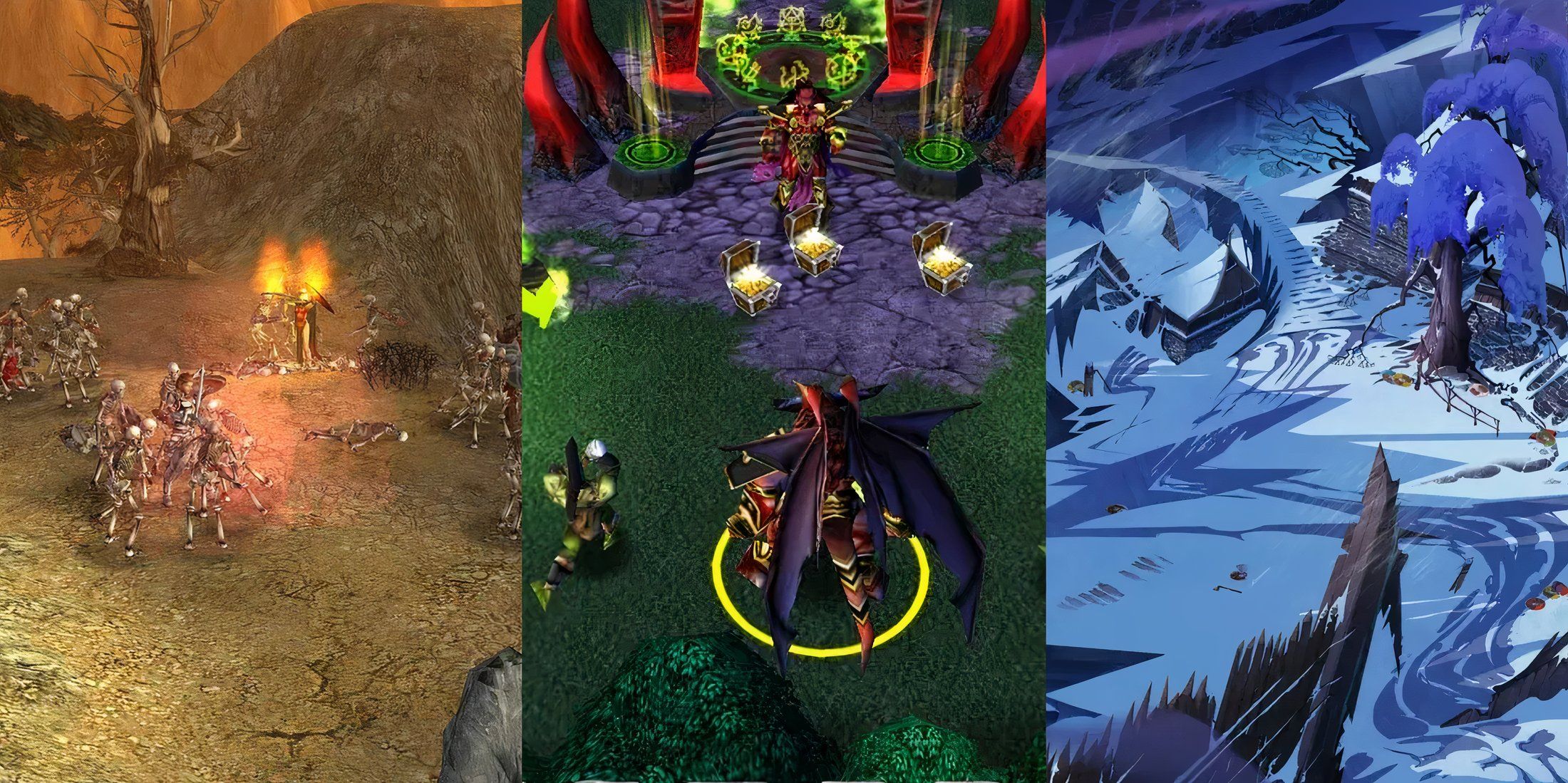
Related
8 Best Games With Unique Blends Of RTS And RPG Gameplay
RTS and RPG fans rarely see eye to eye, but these games manage to effectively blend these two disparate genres into something both unique and fun.
Farris: Combat geometry is a real pain to figure out. For example, we had to make some minor changes to the declination capability of the Trader Corvette. Its flight pattern flies perpendicular to enemy ships, and it could only get one of the two turrets to fire on the target. We had to adjust it so that it could decline by 10% more, allowing both turrets to fire at the same time. Trying to figure out whether to make a model change or a math adjustment, along with balance tweaks, is challenging. It’s fun but definitely tricky.
Clair: Yeah, and it makes a bigger difference because, in Sins 2, you can actually shoot down missiles and torpedoes, unlike in Sins 1, where they were effectively just sprite particles or meshes. In Sins 2, for example, your Garda Flak Frigates can shoot these things down, and it makes a big difference since missiles can do a ton of damage. Balancing becomes important to ensure that a fleet of frigates can neutralize the same supply amount of missile cruisers. This has to be consistent across all factions.
Farris: One of my favorite things about Sins 2 is the complex interactions between missiles and point defense turrets and how they impact the battlefield, especially concerning range. Missiles have a certain acceleration—when they come out of the launch tube, they start slow, but they get faster as they head toward their target. The tracking rate of point defense turrets plays a significant role in whether or not they’ll be able to shoot the missile down. Early on, when the missiles are right out of the tube, they’re easier to shoot, but as they get closer to the target and have had more time to build up speed, they become much harder to hit. The interception geometry and math involved in this is really interesting, and it’s very rewarding.
Q: You mentioned how faction identity is very important in Sins 2. Since we’re talking about balance, what was your approach to making each faction feel distinct, with unique tactics and capabilities?
Clair: That came forward from what we did in Sins of a Solar Empire: Rebellion when we introduced the civil war element and broke the factions into sub-factions. The easiest example to start with is the Tech Primacy. As I mentioned earlier, they’re very xenophobic, so that gave us a very clear direction for how we wanted to treat them in Sins 2. With the Trader faction, since they’re humans and more relatable, we figured most players would choose them initially. Their economy is very straightforward and no different from the Tech Enclave or Tech Primacy. The trade element is their big focus.
For the Primacy, we leaned into their interactions with pirates and the tech they get that you can unlock later on, which gives damage bonuses when attacking Xenos—basically, the Advent. This plays through to their titan, the Ragnarov, which is all about overkill.
On the other hand, the Enclave, which was the defensive faction in Rebellion, is even more so in Sins 2. We really played into that defensive theme. They’re the ones who can get double starbases, and they have a garrison mechanic, which becomes incredibly powerful once you unlock it. Originally, it was unlocked from the start, but we found it was a bit overpowered for quickly handling things early in the game.
Farris: It overwhelmed new players a little bit too because their ships kind of do their own thing, and that can be confusing for first-time players. We adjusted the research tree a bit and made it more powerful so that it was worth unlocking.
Clair: Switching to the Vasari, for instance, you have the Vasari Exodus and the Vasari Alliance, and they’re even more diametrically opposed. The Exodus are essentially, “I’m going to stand up for the Vasari. I’m going to take what I need and kill everybody else who gets in my way.” They play exactly that way. They’re not trying to make friends. They have the Strip to the Core ability, which allows them to colonize a planet, set it up, and blow it up, harvesting all the resources. You can imagine what that will do to the population, right? That’s actually going to be a mechanic.
They go fully mobile, which is a really cool feature. This ties back to modders who wanted to do that Battlestar Galactica mod. There you go, right? Once you research going mobile, what that means is you can put an item on your Titan, and your homeworld essentially becomes the Titan. So, if your actual homeworld planet gets wiped out, you don’t care. The game doesn’t end—you’ve gone mobile, which allows you to blow up as many planets as you want for resources.
Versus the Vasari Alliance, which relies on making friends with as many players as possible, including the minor factions that they can see right from the start. This gives them an immediate advantage, even over Tech players. Being able to start a map and know where the markets are is a huge initial boon. Plus, Vasari Alliance players can unlock tech that makes them behave more amicably with their allies, giving them various boosts, like credit production and whatnot. So, it plays into their “let’s all be friends, Kumbaya, and get out of here together” mentality.
The Advent have their stark differences along the lore lines as well. The Advent Rebirth, which are essentially the “good guys,” focus on regeneration—they can resurrect destroyed ships and are all about renewal. In contrast, the Advent Wrath is the polar opposite, focusing on bringing as much death and conversion as possible. Both factions will try to make you part of the Unity, but one is a lot more sinister about it than the other.
Q: RTS has come a long way since the original Sins of a Solar Empire. Have you looked to the broader genre as you worked on the sequel?
Clair: We absolutely have. It’s interesting because, in a way, the genre has moved forward, but in other ways, it hasn’t. One of the things we insisted on adding was camera control. I can’t even play a game now if it doesn’t have that—it’s become something I need. But there are other things we’ve looked to streamline, which has thrown off a lot of our initial players, including those coming from Sins of a Solar Empire: Rebellion. There’s a lot in the UI that isn’t standard, and it’s because we asked ourselves, “How can we make this easier?” It’s hard to explain that to the player and help them wrap their head around it.
For example, we implemented a new planet screen. We know you’ll potentially have 100 planets or dozens at least, especially on larger maps. You don’t want to go to each one individually and upgrade them one at a time like in Sins of a Solar Empire: Rebellion. So we created a whole new window that lists all your planets, and you can do everything you could normally do by selecting one and going into that screen. The same thing happens for ships, fleets, and starbases. It’s just a lot easier to manage when you don’t have to hunt and peck for every little thing.
Farris: Brian nailed quite a bit of it there. We pay a lot of attention to what’s happening in the industry—what we can learn from and what we shouldn’t do. The industry’s ebbed and flowed a lot, with its ups and downs. Sometimes, you look at something and think, “Oh, we definitely don’t want to do that.”
Clair: Apart from the UI, a lot of what’s happened in the industry since Sins one came out is there’s been a lot more cross-pollination between genres. We were popular because we brought 4X elements into RTS, which no one had really done before. These days, it’s rare to find a pure strategy game or a pure FPS. Everything is blending different elements of other genres because that’s what players expect—they want a deeper experience. To do that, you have to pull in other genres. A lot of things pull in some adventure RPG elements. We try to do the same thing in Sins, but with the various lore elements—not as drastically, but enough to make you feel it. As part of what this DLC lets us do for later in the year, we’ll be able to expose more of that to the player, making the universe even more alive.
Exciting New Features In Sins of a Solar Empire 2: Paths to Power
Q: Is there anything in the expansion you’re particularly excited for players to experience?
Farris: Kind of the whole thing—it’s a big wish list of stuff that would be cool to do in Sins. The Clash of the Titans map allows you to build more than one Titan. That’s a big request from people, like, “Why can’t we build two Enclave Titans?” or something like that. This mode will allow you to do that. It’s going to let you have massive space battles with even bigger fleets.
Clair: One of the cool scenarios, I believe it’s called Conversion, was the impetus for initially bringing back the population mechanic. The whole premise is that you play as one of the Advent factions, and the win condition is to assimilate the galaxy through the new population mechanics. It’s not about just killing everyone, although you could technically do that as a way to reach the required percentage. The real goal is about unity—assimilating everyone else through culture and population mechanics we’ve implemented. I think that’s going to be really cool.
To Chad’s point, other scenarios put you in unique situations and ask, “How are you going to get out of this? How are you going to win?” For instance, instead of starting at the beginning of the game, we place you in the mid to late game, where you already have a bunch of unlocked technologies, planets, and a fleet. The scenario is set up like, “Okay, you’re here, the other guy is there. He’s got the same amount of stuff you do. Who’s going to win? Find out.”
Q: Sins 2 has undergone some major updates since its launch. For returning players, can you talk about some of the biggest improvements the game has seen?
Clair: There are a few additions, including some new custom debris for capital ships, starbases, and Titans, which really enhance the feeling of units breaking apart when they explode. We also added new gravity wells like magnetic clouds, plasma storms, and radiation storms.
Farris: Bringing those uncolonizables back was really important. It allows for play spaces that players don’t have direct control over, so you don’t know what’s in them until you get in. They also have unique conditions, like not being able to use abilities or launch strike craft and stuff like that.
Clair: The December update we did with the Unity drastically reworked both Advent factions to make them more unique. Then we had “Ruins of War,” which introduced a new gravity well, new star types, and a bunch of balance changes. The March update, coming with DLC 1.4, will feature even more balance changes based largely on community feedback. Ship survivability, for example, is going to greatly increase. Players have told us that battles don’t last long enough, and we’ve agreed—capital ships, for instance, are supposed to be your hero units, but they don’t last long enough. We need them to feel more substantial. So, as part of this update, we’re increasing survivability across the board, especially for capital ships, Titans, and starbases. As these units level up, they’re going to get significantly more powerful, and you’ll feel the impact when you get your capital ship or Titan to level 10, especially when facing anything else.
Q: Are there any key points from the upcoming free update that you’re excited to share? We may have touched on a few already.
Farris: It’s a massive update. The new units are a big part of it. For the Vasari, we’re bringing back their fighters, and they’re also getting a heavy interceptor, which is a heavier version of the previous interceptor from Sins of a Solar Empire: Rebellion. Additionally, they’re getting a point defense frigate, a ship designed specifically for that role. The TEC is also getting a missile corvette, which will feature a high-pierce weapon that allows it to take on larger ships directly.
Q: Any last thoughts you’d like to share?
Clair: We’re just really grateful for the community we have and how people have responded to the game. We’re fortunate to keep working on it and expanding it the way we do. It’s not something most people get to experience.
Farris: Huge monthly updates every month on your favorite game like this is great. Shoutout to the modding community for Sins. Absolutely my alma mater, and I think we have the best gaming community in the industry. The Sins community is amazing, and they’ve been really collaborative with us on this process. We’re so grateful for it.
[END]
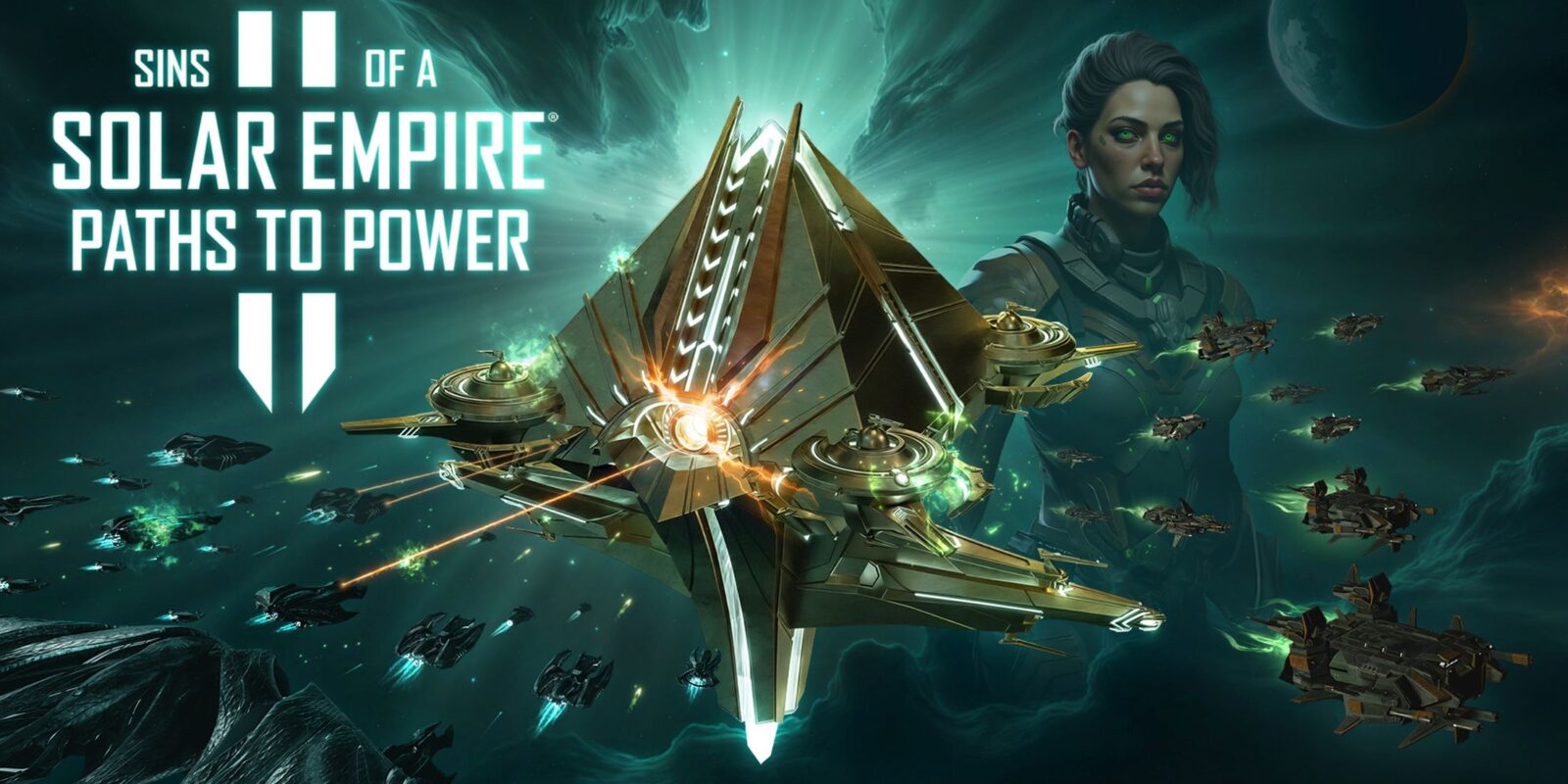
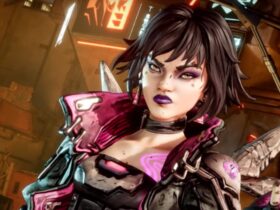

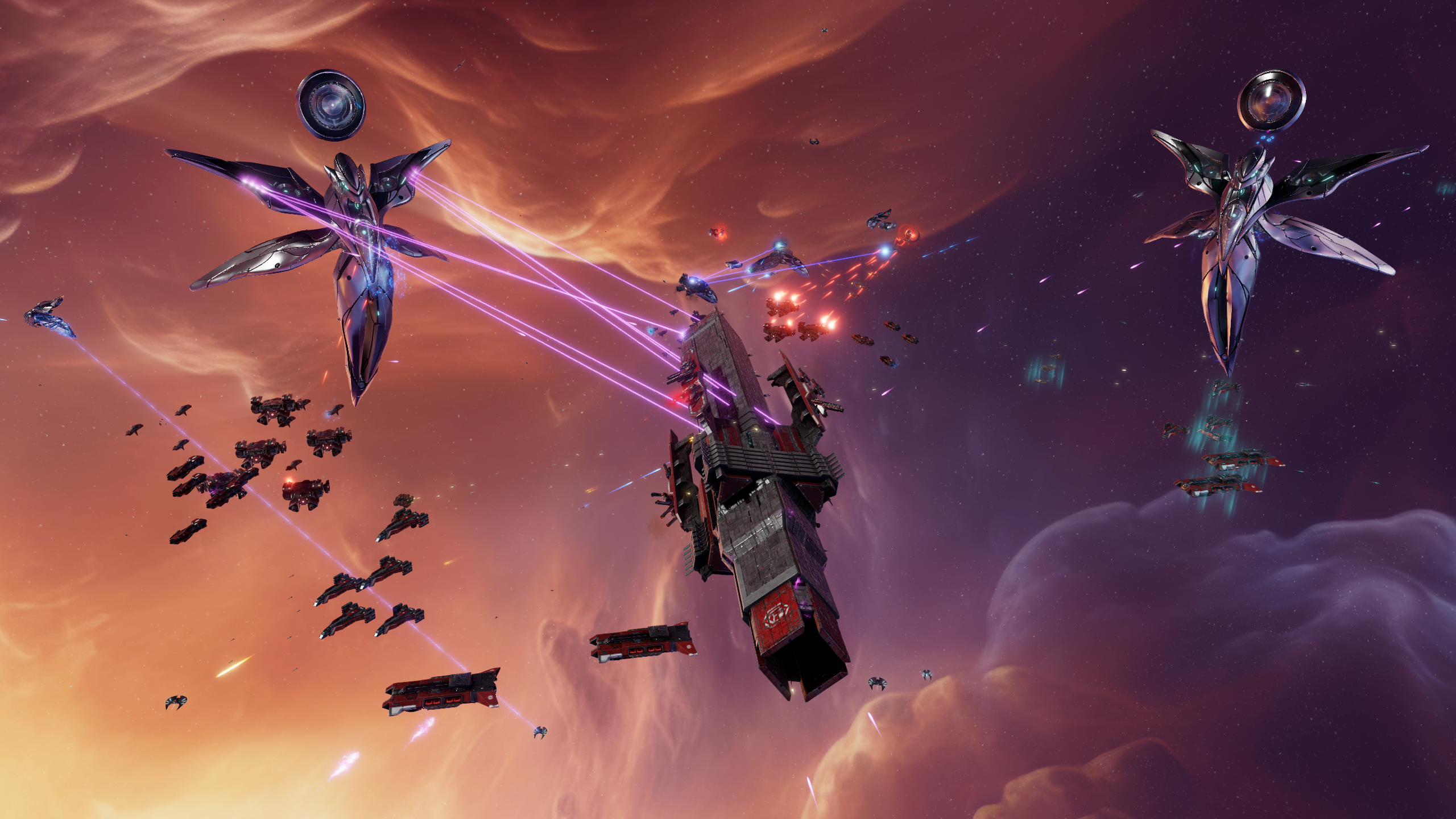
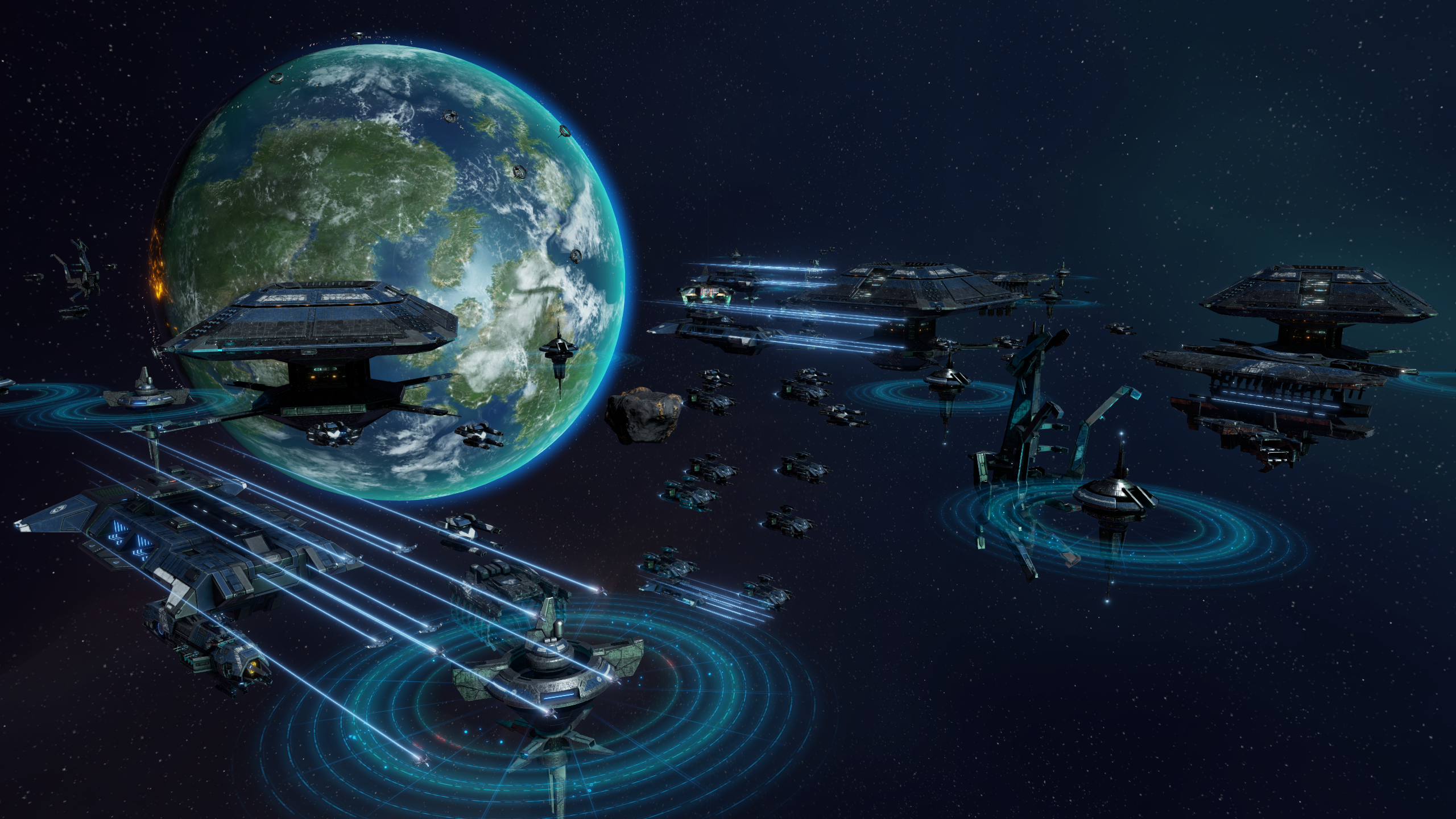


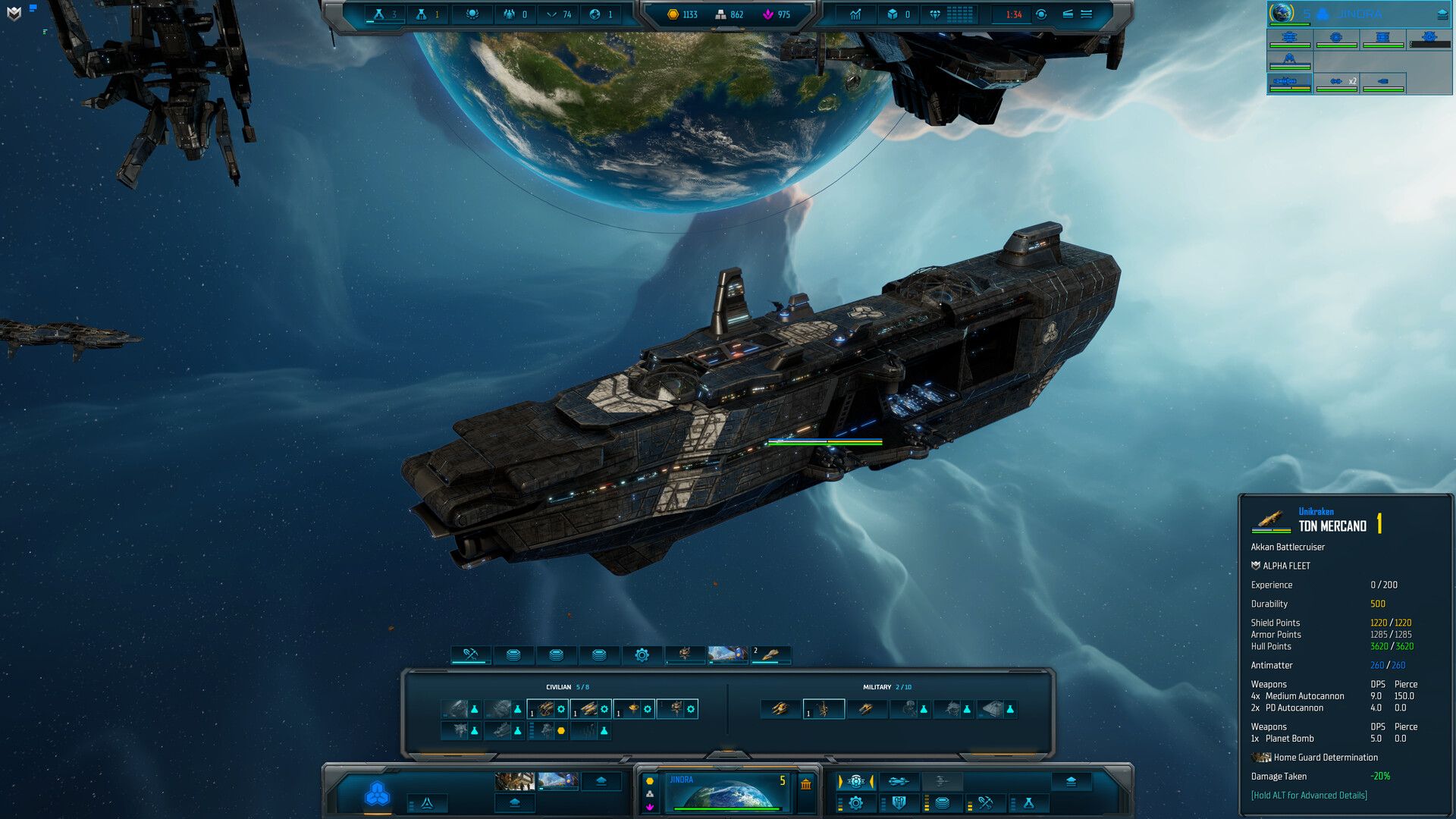











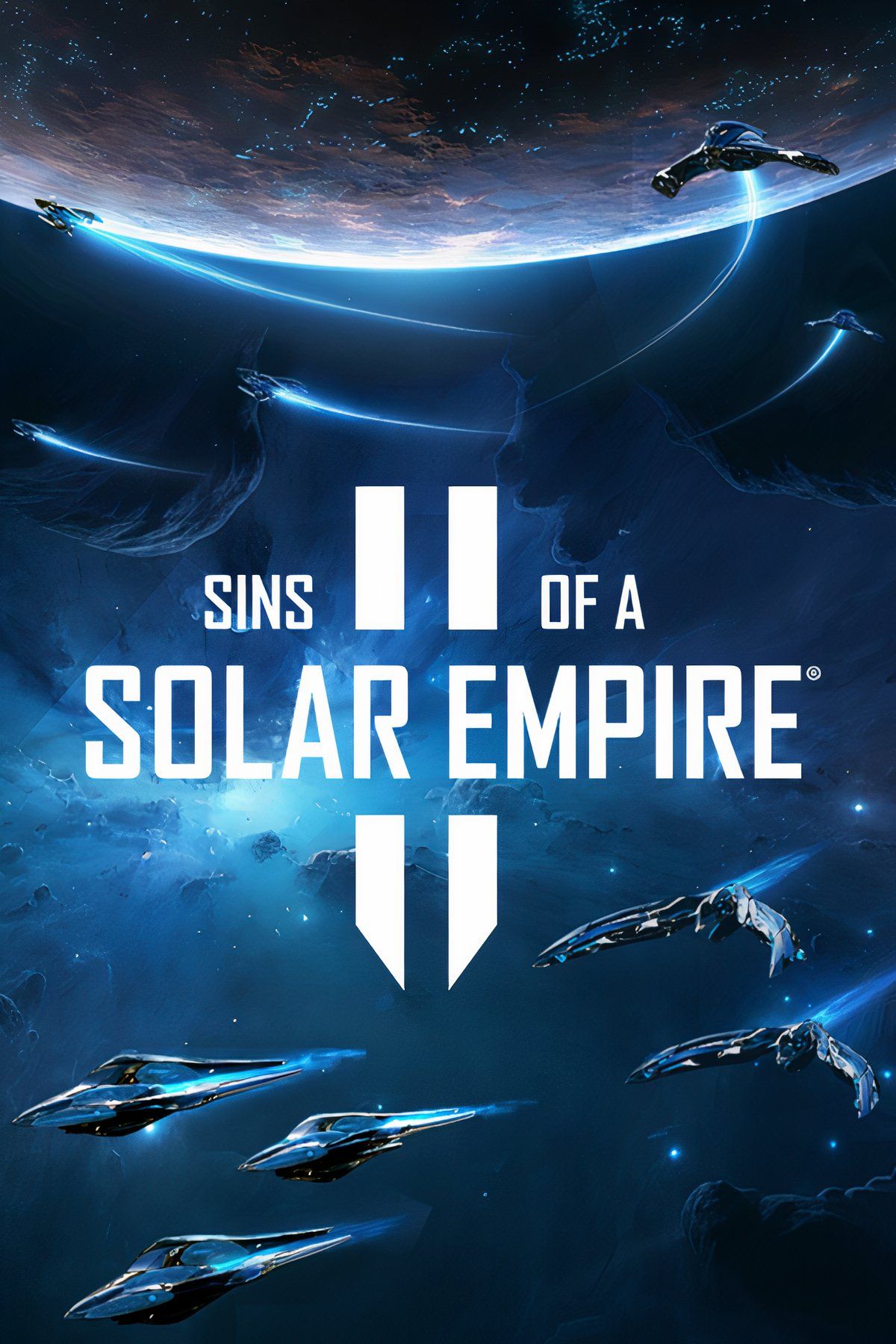










Leave a Reply